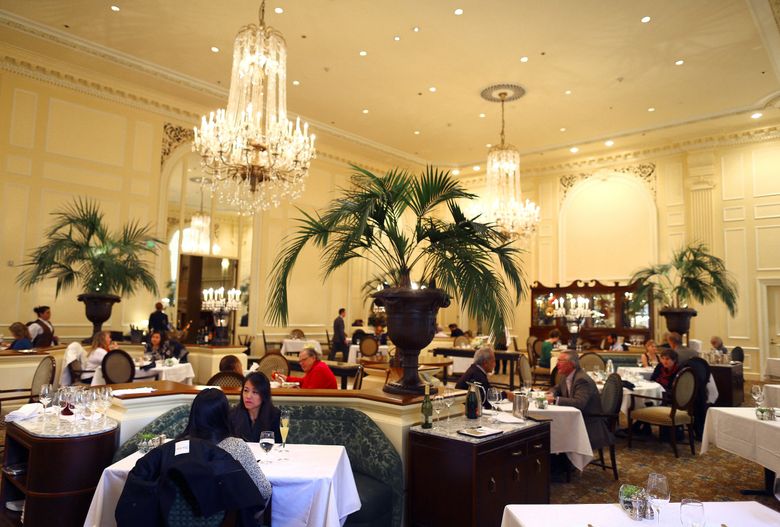Chinese Food Islamabad: Enjoy Genuine Chinese Cuisine at its Best
Chinese Food Islamabad: Enjoy Genuine Chinese Cuisine at its Best
Blog Article
Savor Authentic Asian Food With a Pan-Asian Spin for a Culinary Journey
Beginning on a cooking trip through genuine Asian food, enhanced with a Pan-Asian twist, uses a distinct chance to discover the rich tapestry of flavors that specify the area's diverse cooking customs. As you contemplate these luring recipes, think about the social narratives and historical impacts that shape them, each bite providing a story waiting to be found. pan asian restaurant Islamabad.

Checking Out Pan-Asian Tastes
In the world of international gastronomy, Pan-Asian food attracts attention for its remarkable diversity and the harmonious interaction of flavors from different Oriental cultures. This culinary technique celebrates the one-of-a-kind components and rich customs discovered throughout the continent, producing a tapestry of tastes that is both gratifying and fascinating. Secret to Pan-Asian food is its capability to stabilize different tastes-- sweet, salty, spicy, and sour-- while highlighting the freshness and top quality of each active ingredient.
From the umami-rich soy sauce of Japan to the intense chili peppers of Thailand, Pan-Asian cuisine uses a considerable scheme of flavors. These aspects are often incorporated in inventive ways, improving recipes with layers of intricacy. For circumstances, making use of aromatic natural herbs such as lemongrass and cilantro, usual in Vietnamese and Thai cuisine, includes a refreshing brightness to meals, while the incorporation of coconut milk supplies a creamy, rich structure.
The focus on fresh fruit and vegetables and aromatic spices makes sure that each dish is not just a feast for the taste buds yet additionally for the detects. Pan-Asian food welcomes restaurants to get started on a cooking trip, exploring the substantial and differed landscapes of Oriental gastronomy with every bite.
Blend Recipes to Attempt
While Pan-Asian food is commemorated for its standard tastes, the modern-day cooking landscape is progressively welcoming blend dishes that blend these traditional components with influences from other regions. This cutting-edge technique not just honors the rich heritage of Oriental culinary arts but also introduces novel taste experiences that appeal to contemporary tastes buds.
An archetype of such a blend dish is the Korean-Mexican taco, where marinaded bulgogi beef is wrapped in a warm tortilla, topped with kimchi and a zesty gochujang-infused salsa. This mix weds the strong, savory tastes of Korea with the vivid, fresh aspects of Mexican cuisine. Similarly, sushi burritos have actually gained popularity, amalgamating the delicate virtuosity of Japanese sushi with the hearty, hand-held benefit of a burrito, frequently including fusion components like tempura shrimp and avocado with a drizzle of wasabi mayo.
One more noteworthy dish is Thai curry ramen, which instills the luscious, aromatic spices of Thai curry right into the comforting broth of conventional Japanese ramen, creating a harmonious blend that tantalizes the senses. These combination dishes expand past plain novelty; they stand for a cooking dialogue between societies, encouraging exploration and advancement on the planet of Pan-Asian food.
Essential Ingredients and Seasonings
To really value Pan-Asian food, one need to understand the vital active ingredients and spices that develop its foundation. This varied cooking design draws from a rich tapestry of Eastern traditions, employing a harmonious mix of tastes and textures.
Fragrant elements are critical, with lemongrass, garlic, and ginger being common across different Pan-Asian recipes. These components supply an aromatic base that improves the intricacy of tastes. Spices such as star anise, cardamom, and cinnamon present warmth and character, echoing impacts from regions like China and India.

Cooking Strategies and Tips
Understanding the art of Pan-Asian cuisine requires familiarity with its unique cooking strategies, each contributing to the vivid tapestry of flavors this culinary custom is celebrated for. Central to these methods is the stir-fry, a quick food preparation method that preserves the dietary stability and dazzling colors of active ingredients. Making use of a wok, the stir-fry approach enables even heat distribution, important for achieving the particular structure and taste equilibrium of Pan-Asian recipes.
Another essential method is steaming, particularly common in Chinese food. This gentle method preserves the natural flavors and nutrients of components, making it optimal for fish and shellfish and vegetables. Dumplings, a precious staple, often gain from steaming, causing soft, delicious appearances.
Barbecuing, additionally integral, imparts great smoky depths to meals such as Oriental bulgogi or Japanese yakitori (best asian restaurant Islamabad). This method often involves seasoning ingredients, permitting tastes to permeate deeply before cooking over an open fire or warmer
Lastly, understanding the art of balancing flavors-- pleasant, sour, salted, bitter, and umami-- is important. Appropriately layering these elements can elevate a dish from common to phenomenal, providing a complex and pleasing cooking experience that personifies the essence of Pan-Asian cuisine.
Eating Experiences Worldwide
Across the globe, news Pan-Asian food provides an exceptional eating experience, celebrated for its abundant tapestry of tastes and vibrant presentations. This cooking sensation has gone beyond cultural boundaries, capturing the hearts and tastes of food fanatics worldwide. In multicultural cities fresh York, London, and Sydney, Pan-Asian restaurants function as fusions where culinary customs from Thailand, Japan, China, and beyond assemble, giving diners with an eclectic mix of recipes that highlight the area's variety.
The global appeal of Pan-Asian food hinges on its ability to provide both credibility and advancement. Chefs masterfully marry standard ingredients such as lemongrass, soy sauce, and miso with modern methods, resulting in recipes that are both refreshingly brand-new and acquainted. This combination enables diners to start a culinary journey that appreciates heritage while embracing modernity.
In addition, dining experiences are boosted through thoughtfully designed environments that reflect the principles of Pan-Asian aesthetic appeals. From minimal Japanese-inspired interiors to dynamic Thai-themed spaces, each dining establishment offers an unique ambiance that enhances the culinary offerings. Consequently, patrons are not just consuming a meal yet partaking in a cultural experience, making Pan-Asian eating an absolutely worldwide phenomenon.
Verdict
The expedition of Pan-Asian food provides an extensive understanding of the detailed interaction of tastes and cooking practices throughout Asia. By accepting blend dishes such as Thai curry ramen and sushi burritos, the cooking journey not just highlights the versatility of traditional components yet also showcases innovative modern techniques. This gastronomic adventure, improved by cooking techniques and necessary flavors, offers a distinct opportunity to value the multiculturalism and cooking creativity that specify Pan-Asian food on a worldwide scale.
Beginning on a culinary trip with genuine Eastern cuisine, boosted with a Pan-Asian spin, supplies an unique chance to explore the abundant tapestry of tastes that define the region's varied cooking traditions.In the world of international gastronomy, Pan-Asian Learn More Here food stands out for its exceptional diversity and the unified interplay of tastes from numerous Asian societies. Key to Pan-Asian cuisine is its ability to balance contrasting tastes-- pleasant, salty, spicy, and sour-- while highlighting the freshness and quality of each active ingredient.

Report this page